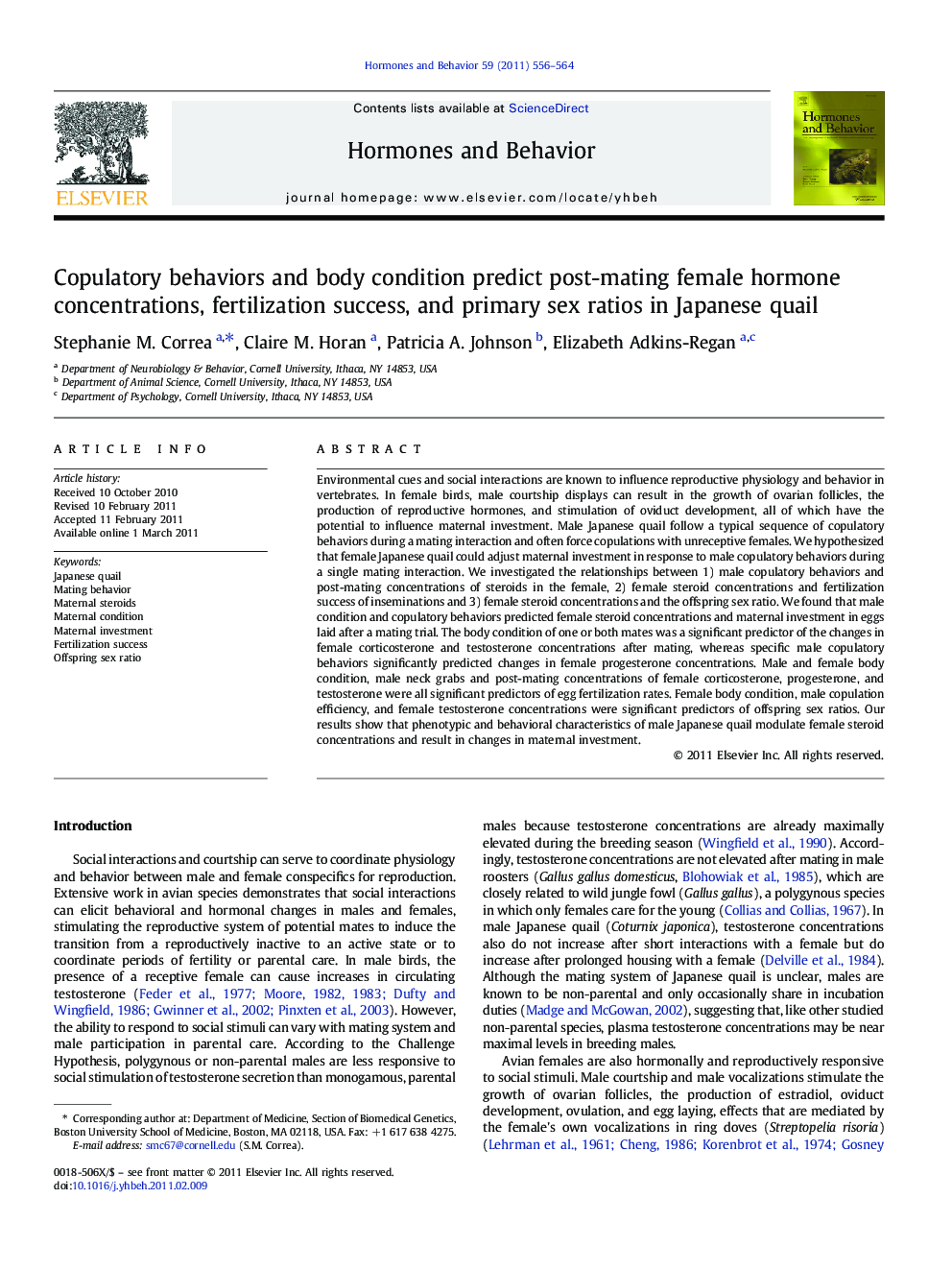| کد مقاله | کد نشریه | سال انتشار | مقاله انگلیسی | نسخه تمام متن |
|---|---|---|---|---|
| 323187 | 540522 | 2011 | 9 صفحه PDF | دانلود رایگان |

Environmental cues and social interactions are known to influence reproductive physiology and behavior in vertebrates. In female birds, male courtship displays can result in the growth of ovarian follicles, the production of reproductive hormones, and stimulation of oviduct development, all of which have the potential to influence maternal investment. Male Japanese quail follow a typical sequence of copulatory behaviors during a mating interaction and often force copulations with unreceptive females. We hypothesized that female Japanese quail could adjust maternal investment in response to male copulatory behaviors during a single mating interaction. We investigated the relationships between 1) male copulatory behaviors and post-mating concentrations of steroids in the female, 2) female steroid concentrations and fertilization success of inseminations and 3) female steroid concentrations and the offspring sex ratio. We found that male condition and copulatory behaviors predicted female steroid concentrations and maternal investment in eggs laid after a mating trial. The body condition of one or both mates was a significant predictor of the changes in female corticosterone and testosterone concentrations after mating, whereas specific male copulatory behaviors significantly predicted changes in female progesterone concentrations. Male and female body condition, male neck grabs and post-mating concentrations of female corticosterone, progesterone, and testosterone were all significant predictors of egg fertilization rates. Female body condition, male copulation efficiency, and female testosterone concentrations were significant predictors of offspring sex ratios. Our results show that phenotypic and behavioral characteristics of male Japanese quail modulate female steroid concentrations and result in changes in maternal investment.
Research highlights
► Male mating behaviors predict changes in female plasma steroid concentrations.
► Female corticosterone concentrations are transiently elevated after mating.
► Male and female body condition predict changes in female corticosterone levels.
► Female body condition and plasma progesterone predict egg fertilization rates.
► Female body condition and plasma testosterone predict offspring sex ratios.
Journal: Hormones and Behavior - Volume 59, Issue 4, April 2011, Pages 556–564